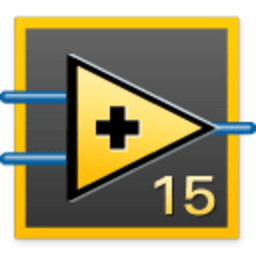
![]()
LabVIEW
LabVIEW offers many of the functions you'd find in a traditional script-based programming language presented in a more intuitive visual interface ideal fo engineering.
Alternatives to LabVIEW
Missing a software in the list? We are always happy if you help us making our site even better.
LabVIEW Reviews
We have 1 review for LabVIEW. The average overall ratings is 4.0 / 5 stars.
Overall Opinion: LabVIEW, short for Laboratory Virtual Instrument Engineering Workbench, is a programming languages designed for use by scientists and engineers. Scientific fields are increasingly requiring more multidisciplinary demands, and this is especially apparent with the increasing need for programming languages to be incorporated into study and testing. But learning a programming language like C++ is an arduous affair, and it's hardly the most productive use of time for a scientist who will likely just use programming in a limited capacity. LabVIEW bridges the gap between versatile and complex programming languages and the ease of use but limitations of fully packaged software suites. It uses an easy to understand visual languages so that engineers and scientists can build out data visualizations and tests that are customized to their specific needs. LabVIEW is built around graphical notation, and the fundamentals of the language can be picked up pretty quickly. The basics are as simple as connecting nodes through graphical wire frames and running data through them, but this basic principle allows a lot of flexibility and variance in practice. The engine that fuels LabVIEW is a proprietary language known as "G", and it can minimize the time it takes to build a functional program down from weeks to months. That's because the software is designed specifically for use in engineering and other science-related fields, and it centers its features around the specific demands of those fields. It's also a great means for creating simulations to show off in presentations or as a means of learning the fundamentals of programming for when you need the sort of robust and specialized programs you'll only get with a more conventional programming language. The block diagram structure used in "G" strips out the need for syntax entirely. Essentially, this means that users won't have to learn the sometimes intricate "grammatical" rules that define non-graphical programming languages. Nodes can be added to a diagram and connected in complex networks using a simple drag and drop interface; and since the entire block diagram is displayed in a clean and visual form, users can spend less time prototyping their applications and trying to hunt down the source of an error. The use of a data flow system makes sure that you understand when and why something went wrong in your program. Users also have a wide variety of options on how the output of their programs are presented. Whether you're looking for raw numbers, packaged charts or graphs, or visualizations integrated into your own personal graphics, you'll find a number of different options right out of the box. To support the diversity of their users while avoiding clutter and unnecessarily complicating the principles behind the software, LabVIEW offers a number of external libraries. That means that you can choose the functions and subroutines that matter for your project on a case by case basis.
Pros: Graphical interface easily translates difficult programming concepts Supported by a substantive library of training resourcs
Cons: Can be unwieldy when not using National Instruments hardware Offers less functionality than text-based programming languages
Screenshots
Comments
About This Article
This page was composed by Alternative.me and published by Alternative.me. It was created at 2018-04-29 07:01:37 and last edited by Alternative.me at 2020-03-06 07:51:22. This page has been viewed 15534 times.